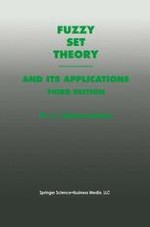1996 | Buch | 3. Auflage
Über dieses Buch
Fuzzy Set Theory - And Its Applications, Third Edition is a textbook for courses in fuzzy set theory. It can also be used as an introduction to the subject. The character of a textbook is balanced with the dynamic nature of the research in the field by including many useful references to develop a deeper understanding among interested readers.
The book updates the research agenda (which has witnessed profound and startling advances since its inception some 30 years ago) with chapters on possibility theory, fuzzy logic and approximate reasoning, expert systems, fuzzy control, fuzzy data analysis, decision making and fuzzy set models in operations research. All chapters have been updated. Exercises are included.
Anzeige
